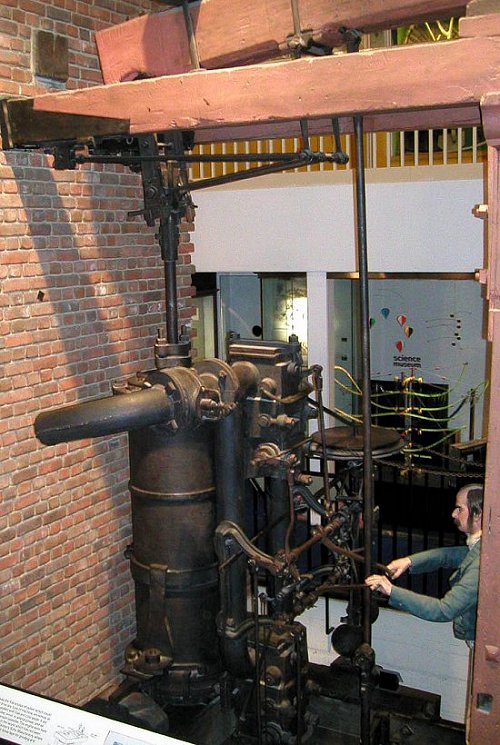The Power of Air and Steam
Today, we just begin to invent the steam engine. The University of Houston's college of engineering presents this series about the machines that make our civilization run, and the people whose ingenuity created them.
Read any book on steam engines, indeed almost any book on invention, and there you'll run into Hero's Turbine. Its creator, Heron of Alexandria, made very sophisticated machines during the first century BC. His so-called Turbine was a steam-powered whirligig device. It delivered no useable power and was only one of many steam-powered gadgets that came out of Alexandria.
We wouldn't actually have steam engines for another seventeen centuries. First, science itself had to overcome a big conceptual hurdle -- the recognition that gases (of which steam is one) have substance and can transmit large forces. Until that time, most people would continue to regard any gas as flimsy nothingness.
Hero jumped that hurdle. So did an earlier Alexandrian, a profoundly clever inventor and engineer named Ktesibios. He was born in 270 BC. He was the son of a barber, from whom he apparently derived much of his ability. His father was known to have contrived an adjustable mirror with a counterbalance that used a compressed air plunger. Young Ktesibios understood how such a device implied that air had corporeal solidity. And, he went on to create all kinds of air-powered machinery.
Ktesibios invented the earliest known water organ -- a regular organ with a kind of water piston forcing air through its pipes. He invented an air pump and compressed air catapults. He did much more, but that makes another story for another day. The very name Ktesibios means He who lives as a maker of things.
Very shortly after Ktesibios, a Byzantine engineer named Philon worked for a time in Alexandria, and he left behind a book titled Pneumatics. In it, he described a dazzling variety of pneumatic devices, including many that'd been invented by Ktesibios.
So Hero's Turbine was only a late step in a long progression of Hellenistic devices that put steam and air to use. It also marked the end of a profoundly inventive age -- an era that seemed poised to give us a true steam engine, long before such machines finally appeared in the eighteenth-century. The question that bothers me is not, "How were we clever enough to invent the steam engine?" but rather "Why on earth did it take so long?"
I can only guess, but I'll bet it goes back to the Aristotelian belief that all matter was made from the alchemical essences of earth, air, fire, and water. That led us to see gases as ephemeral. The Hellenistic engineers, however, picked up on the even older Greek concept that matter was made of atoms. They recognized the material nature of air. They saw it as made of solid elements that could exert large forces.
But the tidal wave of alchemy swept atoms aside. An atomic conception of matter didn't reassert itself until the scientific revolution in the 1600s. And it was only then that could we finally finish inventing the steam engine.
I'm John Lienhard, at the University of Houston, where we're interested in the way inventive minds work.
Clear and precise articles by A. G. Drachmann on Ctesibios (Ktesibios), Philo of Byzantium, and Hero of Alexandria are given in the Dictionary of Scientific Biography (C.C. Gilespie, ed.) New York: Charles Scribner's Sons, 1970-1980.
For more on these inventors, see O. Mayr, The Origins of Feedback Control.Cambridge, MA: The M.I.T. Press, 1969. See Part One, Section II.
For more on Hero, see Episode 1038.

The working end of a 1788 Watt steam engine on display at the London Science Museum. This is from ninety years after the first working steam engine and about 1750 years after Hero. (Photo by John Lienhard)